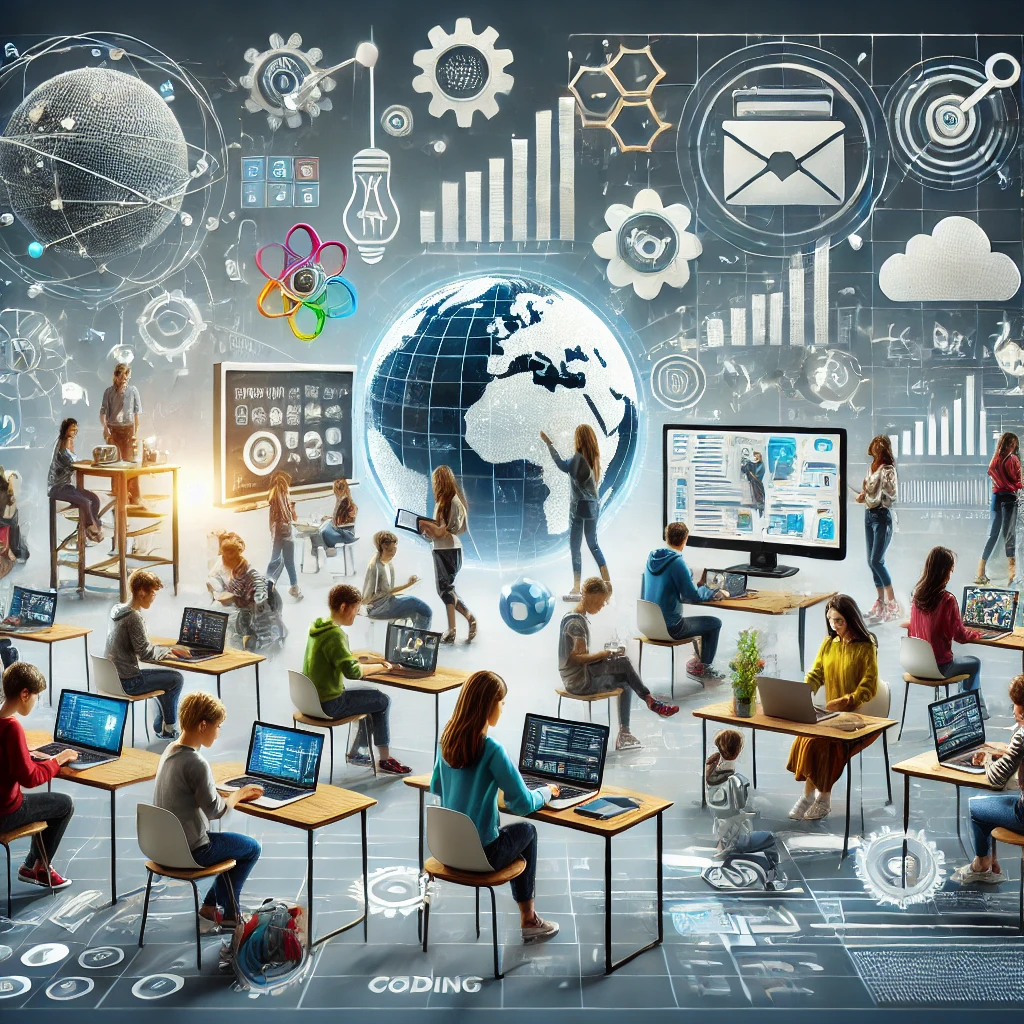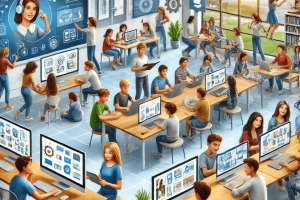Empowering Education: Tech Integration Strategies for the Digital Age
Tech Integration Strategies play a pivotal role in modernizing education and equipping students with the skills they need for the digital age. Incorporating technology into the classroom can enhance learning experiences, foster creativity, and improve educational outcomes. In this article, we will explore various Tech Integration Strategies that empower educators and students, making education more interactive, engaging, and effective.
Understanding Tech Integration in Education
What Are Tech Integration Strategies?
- Definition: Tech Integration Strategies involve incorporating digital tools and resources into teaching and learning processes to enhance educational experiences.
- Purpose: These strategies aim to improve student engagement, personalize learning, and prepare students for the demands of the 21st-century workforce.
Benefits of Tech Integration Strategies
- Enhanced Engagement: Interactive tools and multimedia resources can make learning more engaging and fun for students.
- Personalized Learning: Technology allows for customized learning experiences tailored to individual student needs and learning paces.
- Improved Collaboration: Digital tools facilitate collaboration among students and between students and teachers, fostering a more interactive learning environment.
Key Tech Integration Strategies
Incorporating Interactive Whiteboards
- Visual Learning: Interactive whiteboards transform traditional classrooms by providing a dynamic platform for visual learning. Teachers can present lessons using videos, animations, and interactive quizzes.
- Student Participation: These boards encourage student participation by allowing them to interact directly with the lesson content.
Utilizing Educational Apps and Software
- Learning Apps: Numerous educational apps are available that cater to different subjects and grade levels. These apps offer interactive exercises, quizzes, and games that make learning enjoyable.
- Software Tools: Educational software like Google Classroom and Microsoft Teams streamline the management of assignments, communications, and collaborative projects.
Implementing Flipped Classroom Models
- Reversed Roles: In a flipped classroom, students watch instructional videos at home and engage in hands-on activities in class. This model maximizes classroom time for interactive and practical learning.
- Enhanced Understanding: Teachers can provide more personalized support during class activities, addressing individual student needs and reinforcing concepts.
Encouraging Collaborative Learning with Tech Tools
- Online Collaboration: Tools like Google Docs, Padlet, and Slack enable students to collaborate on projects in real time, regardless of their location.
- Peer Interaction: These tools promote peer interaction and teamwork, essential skills for the modern workplace.
Integrating Gamification in Lessons
- Engagement through Games: Gamification incorporates game elements into learning activities. This strategy boosts engagement by making lessons more interactive and enjoyable.
- Reward Systems: Points, badges, and leaderboards can motivate students to participate actively and strive for better performance.
Practical Applications of Tech Integration Strategies
Virtual Reality (VR) and Augmented Reality (AR)
- Immersive Learning: VR and AR provide immersive learning experiences. Students can explore historical sites, conduct virtual science experiments, and engage in simulated environments.
- Enhanced Understanding: These technologies help students understand complex concepts by providing a hands-on, experiential learning approach.
Digital Portfolios
- Showcasing Work: Digital portfolios allow students to compile and showcase their work over time. This practice encourages self-reflection and continuous improvement.
- Feedback and Assessment: Teachers can provide ongoing feedback, and students can track their progress and achievements.
Coding and STEM Education
- Future-Ready Skills: Integrating coding and STEM (Science, Technology, Engineering, and Mathematics) education prepares students for future careers. Coding skills are becoming increasingly important in various fields.
- Interactive Learning: Platforms like Scratch, Code.org, and Khan Academy offer interactive coding lessons and projects for students of all ages.
Challenges and Solutions in Tech Integration
Overcoming Resistance to Change
- Teacher Training: Providing adequate training and professional development for teachers can help overcome resistance to integrating technology.
- Demonstrating Benefits: Showcasing the positive impact of tech integration on student engagement and learning outcomes can encourage more educators to adopt these strategies.
Ensuring Access and Equity
- Bridging the Digital Divide: Schools should ensure that all students have access to necessary technology and internet connectivity. This effort includes providing devices and internet access to underserved communities.
- Inclusive Design: Educational tools and resources should be designed to be accessible to students with diverse learning needs and disabilities.
Maintaining Cybersecurity
- Protecting Data: Schools must implement robust cybersecurity measures to protect student data and privacy.
- Educating Students: Teaching students about online safety and responsible digital citizenship is crucial in the digital age.
Future Trends in Tech Integration
Artificial Intelligence (AI) in Education
- Personalized Learning: AI can provide personalized learning experiences by analyzing student data and tailoring instruction to individual needs.
- Intelligent Tutoring Systems: These systems offer real-time feedback and support, helping students learn more effectively.
Blockchain for Educational Credentials
- Secure Certifications: Blockchain technology can be used to issue and verify educational credentials securely, preventing fraud and ensuring the authenticity of qualifications.
- Student Records: Blockchain can provide a secure, tamper-proof record of student achievements and progress.
Conclusion: Embracing the Future with Tech Integration Strategies
Empowering education with effective Tech Integration Strategies is essential for preparing students for the digital age. By incorporating interactive tools, personalized learning experiences, and collaborative platforms, educators can enhance student engagement and learning outcomes. As technology continues to evolve, adopting these strategies will ensure that education remains relevant, dynamic, and effective.
External Link: For more insights on tech integration in education, visit EdTech Magazine.
Start implementing these Tech Integration Strategies today to create a more engaging and effective learning environment for your students. Embrace the power of technology to unlock new opportunities and possibilities in education.
To read more articles like this, visit: Regent Studies



